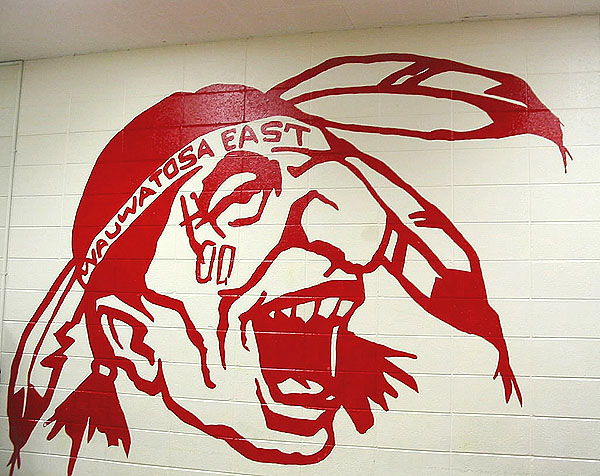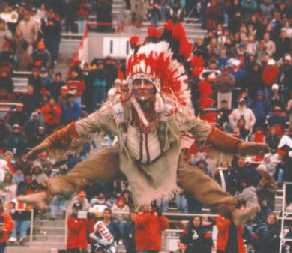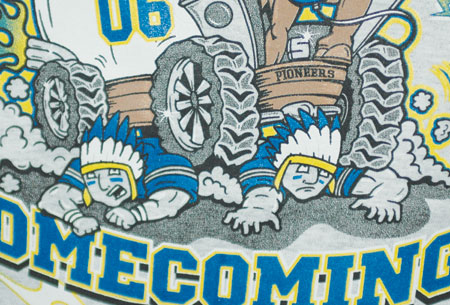Educator Debbie Reese posts a critique of a typical Western painting of Indians:
Albert Marrin's Years of Dust: The Story of the Dust BowlThe illustration at the bottom of the sidebar is a reproduction of a 1901 painting by Charles Schreyvogel titled "Doomed." It shows an Indian man on horseback, wearing a feathered warbonnet, lance held high, about to plunge it into a buffalo. Who was Schreyvogel? I read a little about him in an article called "Racism, Nationalism, and Nostalgia in Cowboy Art" by J. Gray Sweeney, published in Oxford Art Journal in Vol. 15, No. 1, 1992. Here's what Sweeney wrote (p. 72):
Who was Schreyvogel? I read a little about him in an article called "Racism, Nationalism, and Nostalgia in Cowboy Art" by J. Gray Sweeney, published in Oxford Art Journal in Vol. 15, No. 1, 1992. Here's what Sweeney wrote (p. 72):
The third painter revered by the modern cowboy artists of today is Charles Schreyvogel. Schreyvogel painted about one hundred works in the years from 1900 to his death in 1912, and although he visited the West briefly, his work was executed entirely in his studio in Hoboken, New Jersey, where he frequently posed his 'manly' German-American compatriots on the tin roof of his apartment overlooking New York City. One of his sources of information about Native Americans derived from sketching actors in Buffalo Bill's Wild West Shows. [...] It seems perfectly comprehensible how such representations of war-like Indians would have met the cultural expectations of Schreyvogel's urban audience in New York City around 1910 whose only knowledge of Native Americans was from dime novels and wild west shows. As such the image is disturbingly indicative of the cultural mind-set of the last half of the nineteenth century that approved genocide. One critic of the day put it this way: "Schreyvogel is more than a historian of the Indian. He is giving us an invaluable record of those parlous days of the Western frontier when a handful of brave men blazed the path for civilization and extended the boundaries of empire for a growing nation."
Sweeney closes the article by discussing how popular this art has become for collectors, and, as subject matter for scholarly studies of its ideology. That scholarship is attacked, as Sweeney says (p. 79):
[R]ecent attacks by conservative critics make it abundantly apparent that the supporters of western art are willing to do everything in their power to protect the cherished fantasy of America's 'winning of the West' promoted in this art.(Excerpted from Debbie Reese's
American Indians in Children's Literature, 12/6/09.)
Comment: I presume the painting's title
Doomed has a double meaning. The buffalo is doomed to die, and so is the Indian's "primitive" way of life.
Schreyvogel could've titled the painting
Victory or
Success, but that wouldn't have conveyed the same message. No, this is all about putting Indians in the past. "Look how brave and colorful they were. Isn't it nice that they still live in our imaginations?"
As I've said many times, this is the same thinking behind
Indian mascots. True, mascot supporters don't label Indians "doomed." But that's implicit in the outdated images of Indian
chiefs and
warriors. "They
were great but now they're gone, and let's celebrate."
For more on the subject, see
Great Plains in Years of Dust,
The Political Uses of Stereotyping, and
A Brief History of Native Stereotyping.
Below: "Go, Indians!"










1 comment:
This got me thinking about stereotyping also in a different way: "Silly" (NOT!) family names involving animals are regarded by mainstream non-Indian society as typically Indian... Guess, what: "Schreyvogel" is German for "Screaming Bird".
Post a Comment